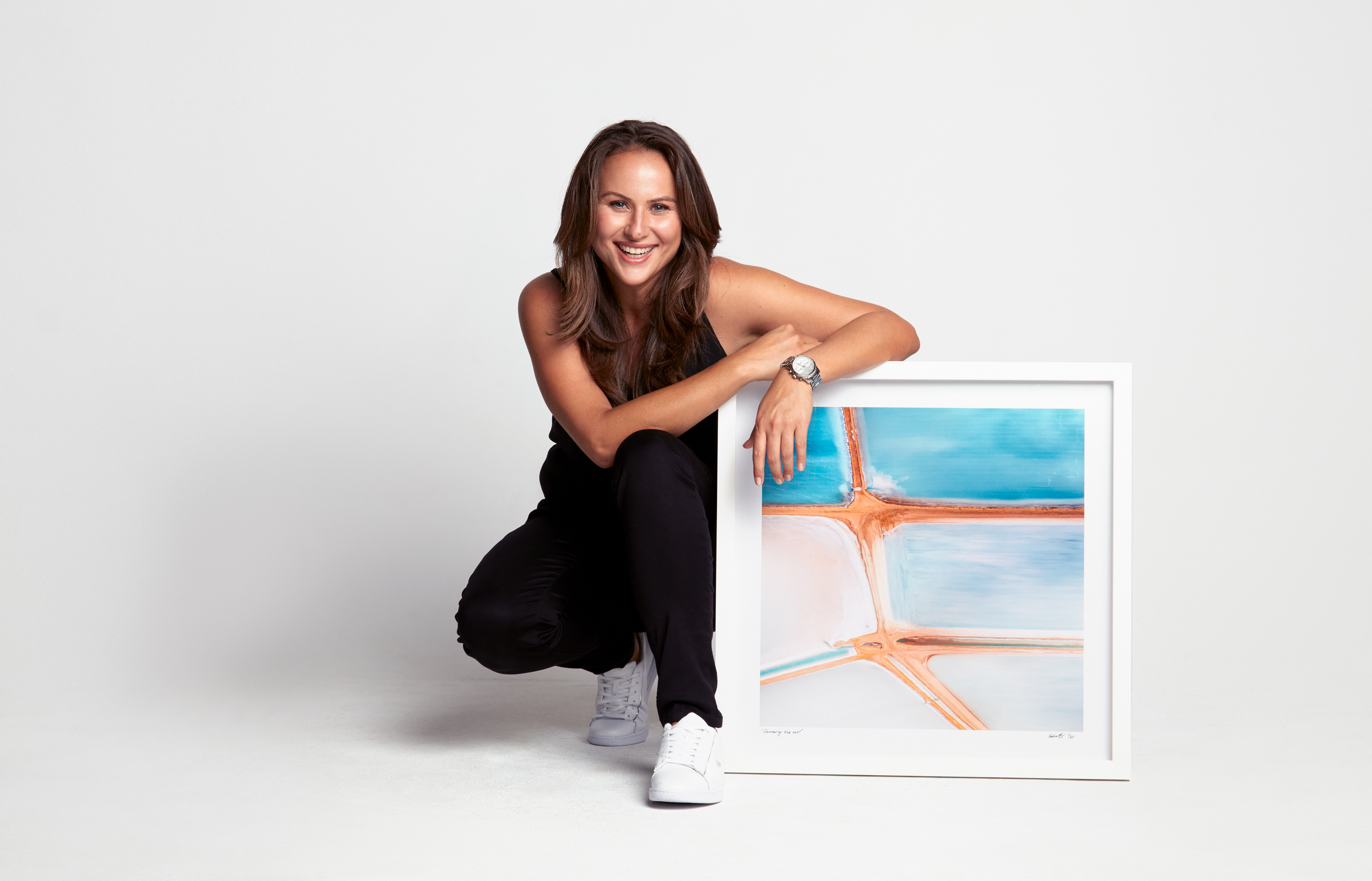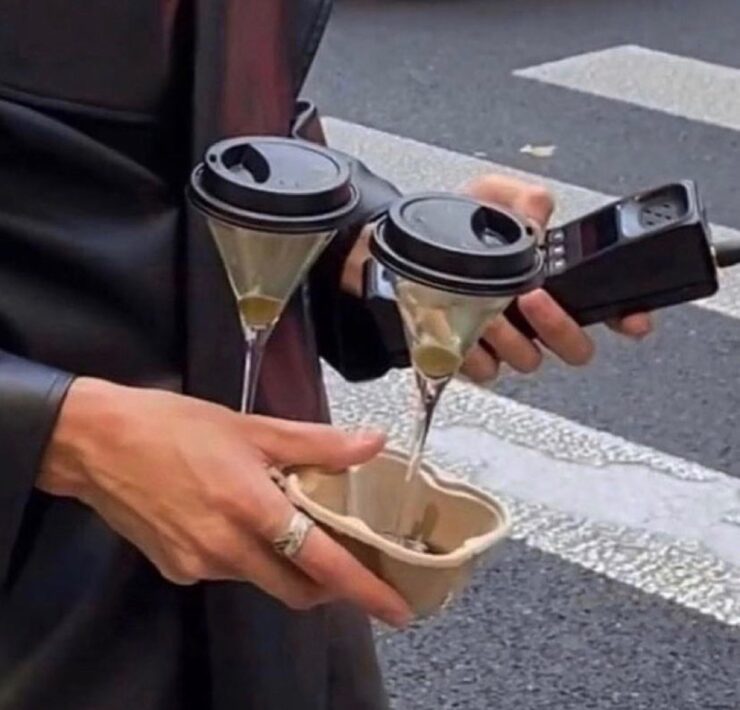Aerial Photography with Australian Photographer Hulia Boz


It is never too late to start your dreams. At 37 years old, Hulia Boz has transformed her entire artistic career. From art school teacher to celebrity photography, the Australian artist can now be seen hanging off of helicopters to create large scale, aerial prints of the Western Australian coast and has recently burst into the New York City art scene. Her solo exhibition, ‘Postcard From Australia,’ was shown at the Australian Consulate in New York, along with a group exhibition at the Olsen Gruin Gallery, ‘Chashama,’ with artists George Byrne and Leila Jeffreys. “I got to photograph people like Oprah Winfrey, Leonardo DiCaprio and George Clooney. But after seven years of doing that type of work I got bored.”
For Boz, the passion for photography was always there. Growing up in Sydney, Australia, Boz was raised in a conservative Turkish family with a mathematician father who didn’t allow her to go to art school. So instead, she received her degree in teaching and studied her Masters in Education, working as a school teacher for 11 years until finally, at the age of 31, one particular moment changed her life forever.
While teaching school in Germany, she received a call about her grandmother’s fatal illness. “I hopped on the next flight to Australia to say my last goodbyes and asked her, ‘Grandma, is there anything you need to tell me about life?’ And she said, ‘Yeah, pull your chin up close I’ve got something to tell you.’ I thought that it’s going to be some kind of family secret but it was actually three tips on life that she wanted to give me: Follow your passion, travel while you’re young, and aim high.”
On that note, Boz gained the confidence to quit her job in education. Upon her grandmother’s passing, she went out and spent $28,000 on camera gear. “I bought every camera equipment I ever wanted,” the photographer said. “I was excited but at the same time as I walked out of there I was like shit. What did I just do? That’s my house deposit.”
She began working as a wedding photographer but knew immediately that wasn’t for her, then got into celebrity photography with a company called Snapper. “They did everything from red carpets, to concerts, to paparazzi, celebrity portrait photos, magazine covers,” Boz said. “They trained me up and it was an amazing experience.”
However, the thrill of celebrity photography took its course, and the artist began to get bored. “I felt like it was happening again—I just didn’t know if this was for me—I wasn’t sure if it was photography I was done with, or the area.” After tossing and turning, Boz went to a clifftop at the beach to meditate. Here, she received her prolific answer, An old blind man sat next to her, who said: “I don’t know what the color blue is. Describe the ocean to me through sound.”
Boz was at a loss for words. She struggled to describe the ocean to him with the sounds she was hearing, and more so shocked to meet a person who has never seen the color blue before. Just as she was talking with him, a helicopter flew above them. Boz, looking up, then and there decides what she was going to do next: Aerial photography. A few moments later, she immediately dialed the first helicopter company she found and booked her first session.





Describe your first time shooting in the air.
After I called the helicopter pilot, I told him I had no experience in aerial photography and the man on the phone told me to do my research and then come back and call him, or else I’d be wasting my money. I’m like: “Dude. That’s fine. When can I come?”
The minute this helicopter lifted off and my feet were dangling out as I had a harness on my back…I knew that this was my zone, and that this was my passion. And as that helicopter kept flying, I was like this is it. I found it. It’s aerial photography. And I remember the pilot asking, “Where do you want to go?” And I said, “Take me to that clifftop at Coogee.” He took me there, and it was actually the spot where the blind man and I had met. And as the helicopter hovered above there I leaned out, dangling out with my hair going everywhere at 50 miles an hour, and I grabbed that camera lense and pressed that frame and it was my first photo. The rest of the ride was all blurry. Every single photo after that was blurry. That helicopter ride costed me $6000. As I started to go through my photos I was like, no! Now I know what I did wrong and yes the helicopter pilot was right, I should have done my research. Aerial photography is a completely different game than photography on the ground from concerts, to portraits, to studio work. You cannot prepare for aerial photography. It’s not like I’m a studio where each hair strand is placed perfectly. It’s not as organized and planned. You go up there and you rely on the pilot’s skills, wind is in your face your hair is flying everywhere and you got to focus and have a lot of upper arm strength because you’re constantly fighting the wind.
I took my first snap and the rest of the photos were blurry—I now know what I did wrong…and I will never do that mistake again—but this first photo was amazing. I named it “Poetry to the Eyes,” because it was thanks to the blind man and my conversation with him that inspired me to finally find my passion. And I said, if I ever have an exhibition I will auction this to the Fred Hollows Foundation, which is a foundation for helping the blind. My first exhibition—it went for $14,000. And it sold twice. I thought, wow. If my journey stopped here right now, I’d be happy. Because I think as a photographer, vision is the most important part of everyday living and I think everyone is entitled to vision and sight and it should not rely on your wealth—but there are a lot of people out there who can’t afford to have their sight restored and receive a cataract operation. So I auctioned that off at $14,000 each and the rest was kind of history, I got my backpack and said: “Mum, Dad, I’m going around Australia and I’m going to do aerial photography.”

Describe your art in three words.
Raw, natural, beauty.
What inspires you?
I’ve always been that person who’s wanted to sit by the window in an airplane because looking down at everyday life from up in the air was always so fascinating. And these days, whether it’s above my local beach at Bondi, or over New York City or a national park, seeing everyday life from up in the air is something that just fascinates me. And when my hair is flicking at 50 miles an hour all over my face and I’m looking down with my legs dangling out through that barrel of the lens I see artworks. And believe it or not I see John Olsen and his work through the barrel of my lens, I see Britt Whiteley, I see Cy Twombly…but the funny thing is it is not a painting, it’s a photograph. If you have a look at my work I have two pieces that are up on my website that look like an original piece of Rothko. When I look down at the barrel of my lense I see everyday life in paintings. When I’m on that helicopter it’s like I’m on my magical carpet. I’m in my zone, I am high on happiness, and it’s my office.
What pushed you to change from celebrity photography to aerial photography?
Celebrity photography was great at the beginning. I did it for 5 years. And then I thought at the beginning it’s fun, you get to meet all these celebrities–you’re not best friends with them–but you get to talk with them on set or at the concert or whatever the job is. And after a while I thought, this isn’t feeding my soul. I want to shoot the real world. I don’t want to be shooting people and following these celebrities, and photographing them and their life at concerts and carpets and this and that, I want to shoot the real world. And that’s kind of how it all happened with the blind man. I started to go and try and out and started to just do it.

Explain your big move to New York and your recent collaborations.
As an artist, you always think, wow, if you could exhibit in New York, it’s amazing, and so when I got the invite, it was about 3 months after my first exhibition, I remember opening up my emails that had been sitting there for six days, and it said: The Australian Consulate would like to invite you and give you the opportunity to exhibit and showcase your beautiful work of Australia to the Americans. My knees started to shake. It was an amazing opportunity that was given to me and I wanted to make sure that I showcased my country and my backyard in the most beautiful unique way that people have not seen. Bondai Beach is the iconic Australian image, but I wanted to show them a side of Australia that even the locals hadn’t seen. And that’s why I went to places like Pink Lagoon where the lagoon is pink, and places like Broome, where it’s just electric blue. It was something that was given to me and I am still grateful for it, but I have to say I think every artist dreams to actually exhibit in New York or LA so I was very privileged, honored, and humbled by the invitation. I went to New York and had my exhibition and I’m so grateful that the Americans loved my work, and I got to show them a side of Australia that was very rarely seen.
A little after my first exhibition I got an opportunity given to me by the Olssen Gruins Gallery in New York, asking if I would like to collaborate with two other Australian artists for an exhibition with George Byrne who does photography and Leila Jeffrey’s was the second artist who photographs amazing portraits of birds. So it was an absolute honor to have this opportunity to exhibit with George Byrne and Leila Jeffreys as an Australian in New York who’s also a photographer.
What’s one thing about New York that you love?
That’s a hard one because New York is my favorite city, but if I had to note it down I would say that the creativity that exists in the city is amazing. I could be on a subway or walking in one of the back street of New York and there would be beautiful poetry graffiti’d on the wall. The creativeness is New York fulfills my soul, it feeds me and inspires me as an artist.
What does “risk-taker” mean to you?
Risk taker to me means getting outside of your comfort zone. Coloring outside the lines. A risk-taker is someone who takes a gamble, takes risks in all kinds of areas. Yeah, I go in helicopters, and yeah, it’s very risky. I risk my life hanging out of a helicopter to create art each time I go up. My mum doesn’t like it, she wishes I was a photographer who was on foot. But you know, you’ve got to do something different and you’ve got to find a passion and take risks and take a gamble. For me, everyday life from above looks much better. Some call me an adrenaline junkie, some call me a risk-taker, but I see it as creating art.
What is the last art exhibition you went to?
The last exhibition I went to was The New Museum of Art on Bowery, and it was Sarah Lucas, she made sculptures out of cigarettes of everyday life.
What is in your current art collection, or if you can own any artwork in the world, what would it be?
Oh man, I’m a sucker for different and creative art. My art collection is still growing. I have things I’ve picked up on the streets of Paris from artists who were selling their work on the side of the street, and I’ve got things I’ve picked up from galleries. If I had to pick one piece of work that I wish I could have, it would be Cy Twombly’s work, ‘The Four Seasons.’
Name your favorite female artist.
She is a young emerging American artist named Cyndey See, and her paintings are really unique and different.
What is the best piece of advice you’ve been given?
The best advice I’ve been given is to be true to yourself and follow your heart.
What should we be looking out for in 2019?
In 2019 I’ll have my new series coming out. I’ve currently moved back to Australia to work on it for three months. There’s going to be a lot of turquoise in my images, a lot of blue, a lot of ocean, palm trees, sand, beach, a summer vibe—I’m really excited to be sharing the new series in May.
Top Image: Photo courtesy of Daniel Sommer.
Hulia Boz is a photographer based in Sydney, Australia. www.huliaboz.com.


